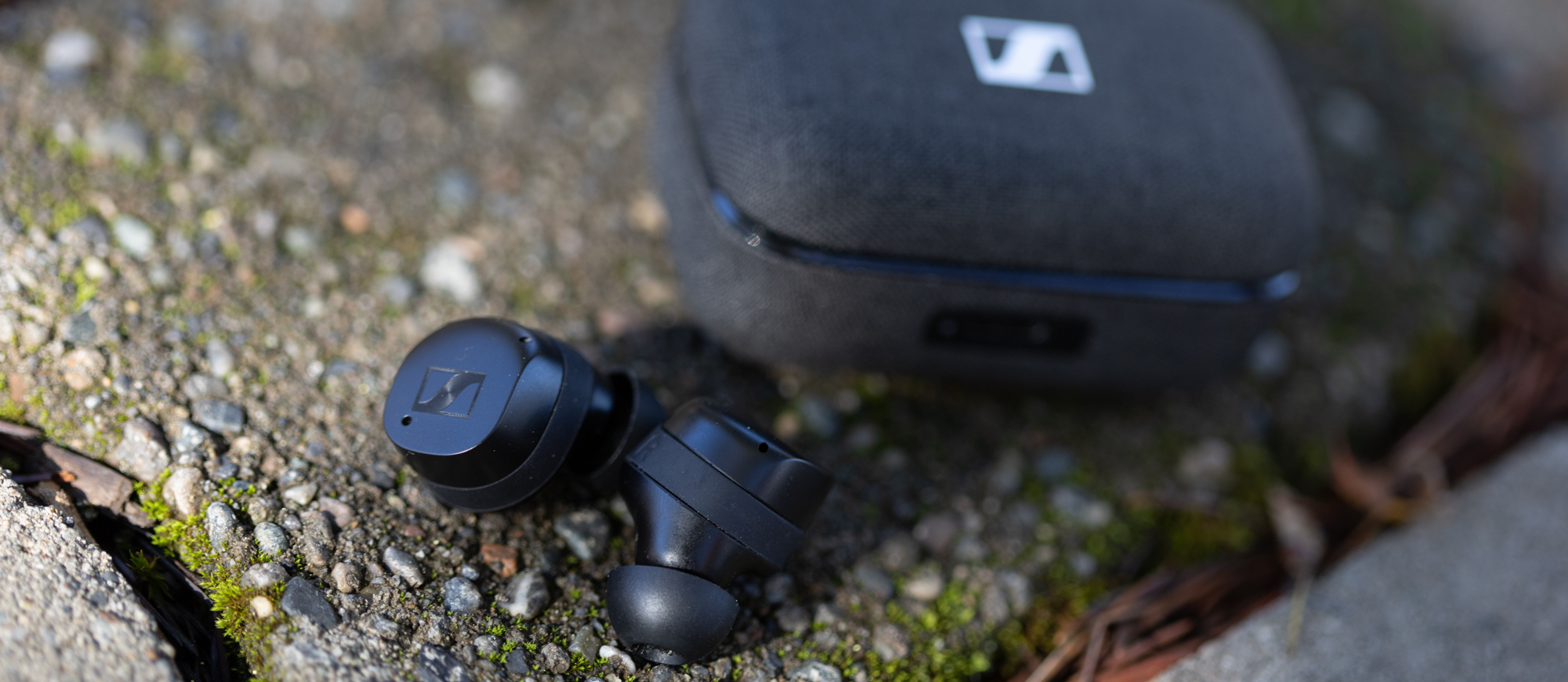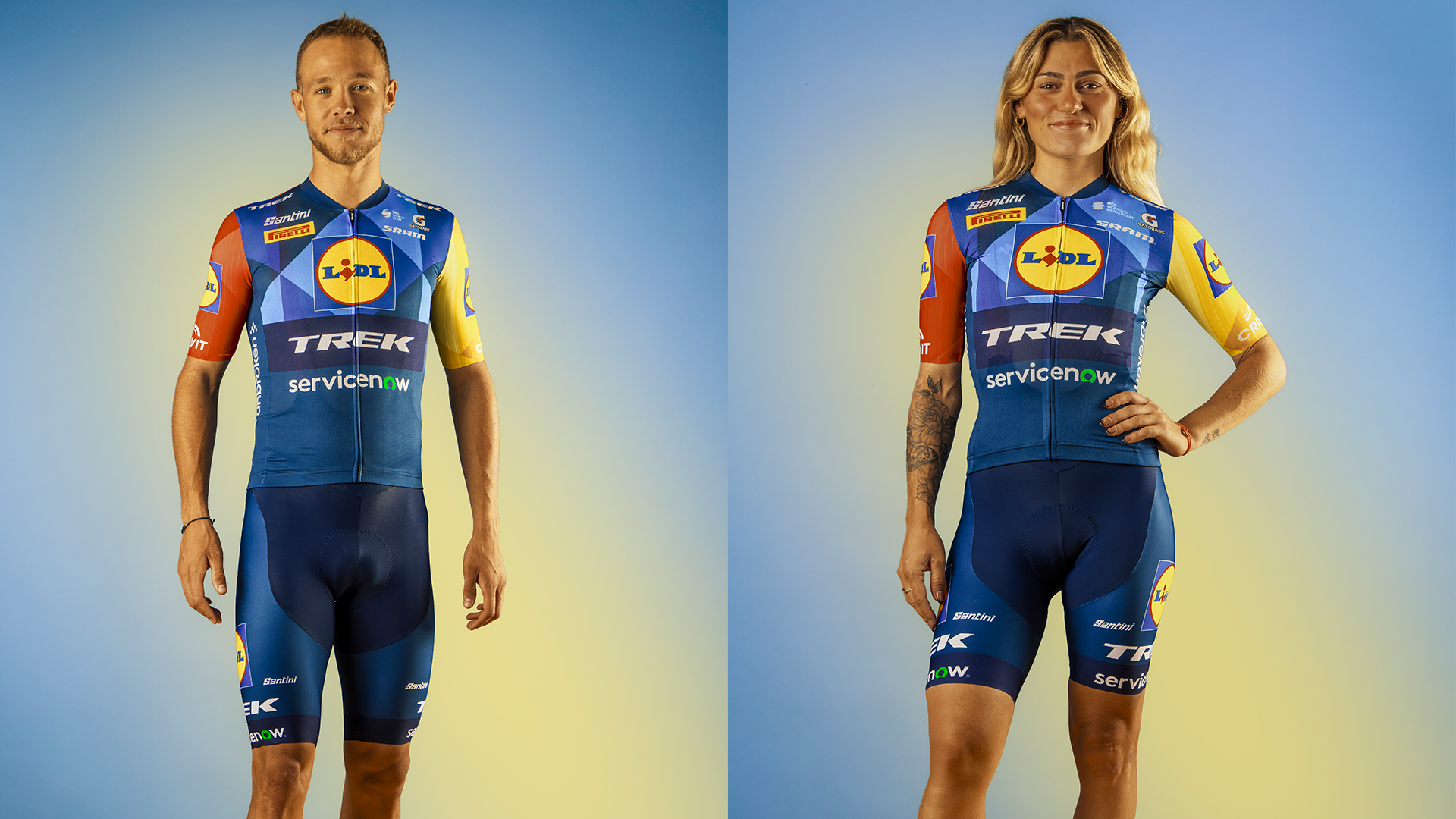Cyclingnews Verdict
The headline feature of the Sennheiser Momentum True Wireless 3 headphones is sound quality through compatibility with the Qualcom aptX Adaptive Bluetooth codec but really that’s a small detail. Instead, consider that a bonus and choose these for their excellent companion app, high-quality noise cancelling, and lots of fit customization options.
Pros
- +
Excellent companion app
- +
High-quality noise cancellation
- +
Size options are included for both the wing and the earbud tip
- +
Long battery life
- +
Three mics per earbud
- +
Plenty of volume in transparency mode
- +
Wireless charging
- +
Multi-point audio
Cons
- -
Expensive
You can trust Cyclingnews
Riding your bike with music is one of those things that just makes life a bit better. Actually making it happen in a way that is safe and fits the wide range of needs is a bit more complicated. For that reason, I've put together a list of the best headphones for cycling but you'll notice I don't talk about sound quality much in that list. The reality is that there are a few too many details to really dive in without much space. Also, there tends to be a lot of similarities with good quality headphones.
Despite that, I listed the Sennheiser Momentum True Wireless 3 as the best option for those who care deeply about sound quality. Sennheiser has a reputation for sound quality and the brand leaned on that when designing their best true wireless headphones. I tested to see not only how they worked in regular day-to-day situations but also on the bike. They aren't specifically marketed as sports headphones so I wanted to make sure I was clear about how they worked in that setting as well. If you are looking for a new pair of headphones for both on, and off, the bike then keep reading to see what Sennheiser offers. Will the Momentum True Wireless 3 be the next audio investment in your future?
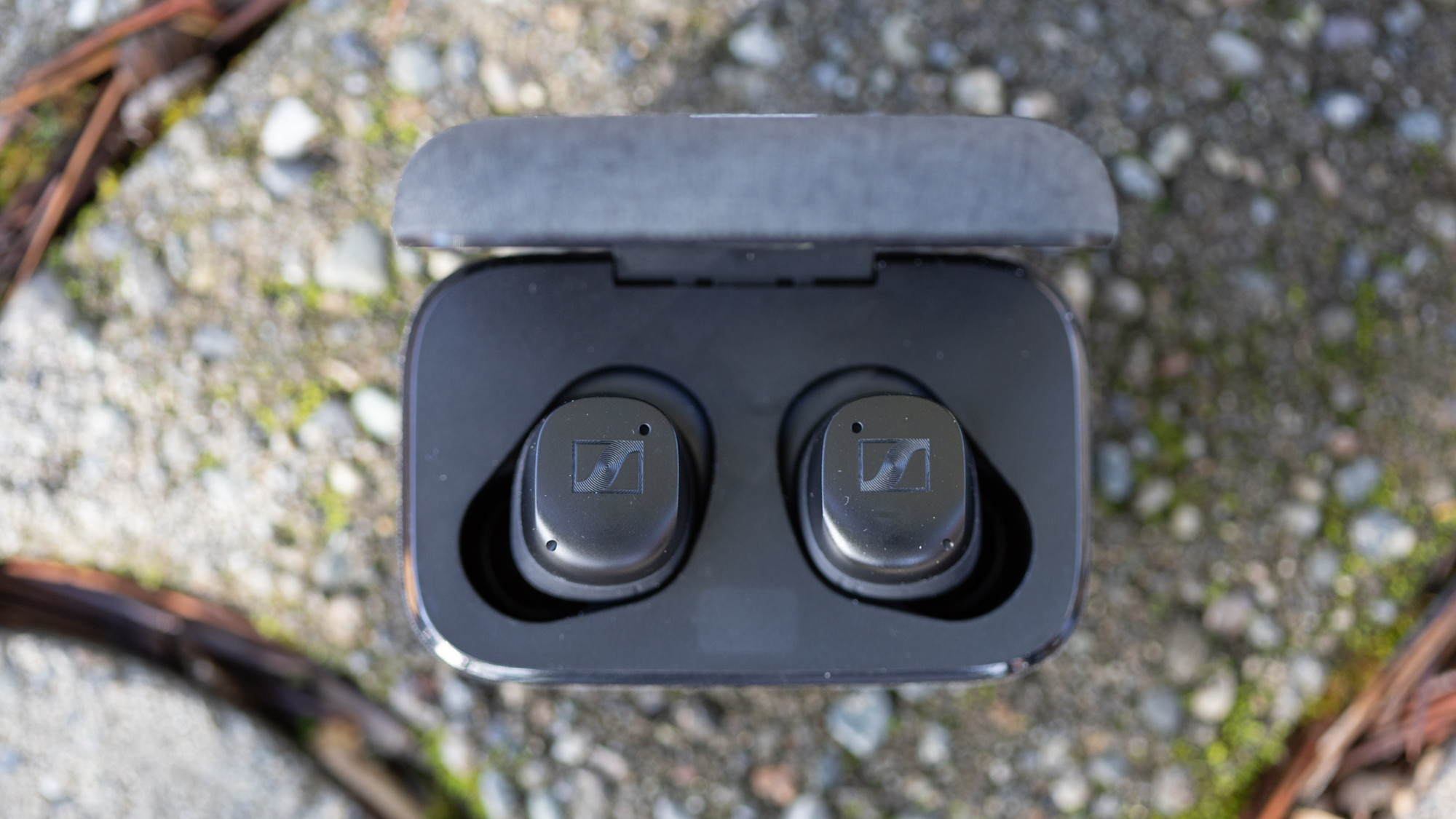
Design and aesthetics
The Sennheiser Momentum True Wireless 3 headphones are not sports-specific. There's nowhere that this is more obvious than in the design of the charging case. It lacks any IP rating but that's not completely unusual. What's more unusual is the black, white, or graphite fabric covering the case. It makes for a lovely hand feel that doesn't threaten to slip from your grasp but you will want to take a bit of care to keep it clean. Other than that detail though, much of the design is surprisingly well-rounded.
The case might carry the hard-to-clean fabric but it's also got a nice big battery. The earbuds have an advertised battery life of up to 7 hours with ANC off and the charging case will top them off as many as three times making for a total of 28 hours of advertised life. As with most modern true wireless headphones, 10 minutes of charging will provide up to an hour of listening. Given that you can use each earbud independently, swapping back and forth between them means you can extend your listening time even longer. When it is time to charge, there's an easy-to-access USB-C port at the front of the case and you can charge the case while using the earbuds.
Open up the case the first time and they will enter a quick pairing mode that makes them ready to pair to a device. Even compared to Google's own Pixel Buds Pro it's one of the better pairing experiences and there's now multipoint pairing support. Gently touch the capacitive buttons on each earbud and hold it for three seconds to initiate the pairing mode again. Add the earbuds to the second device and they will seamlessly switch between the two devices depending on use. The common use case for this is music through a computer while staying connected to a phone in case a phone call comes in. You might want to rethink using them this way though.
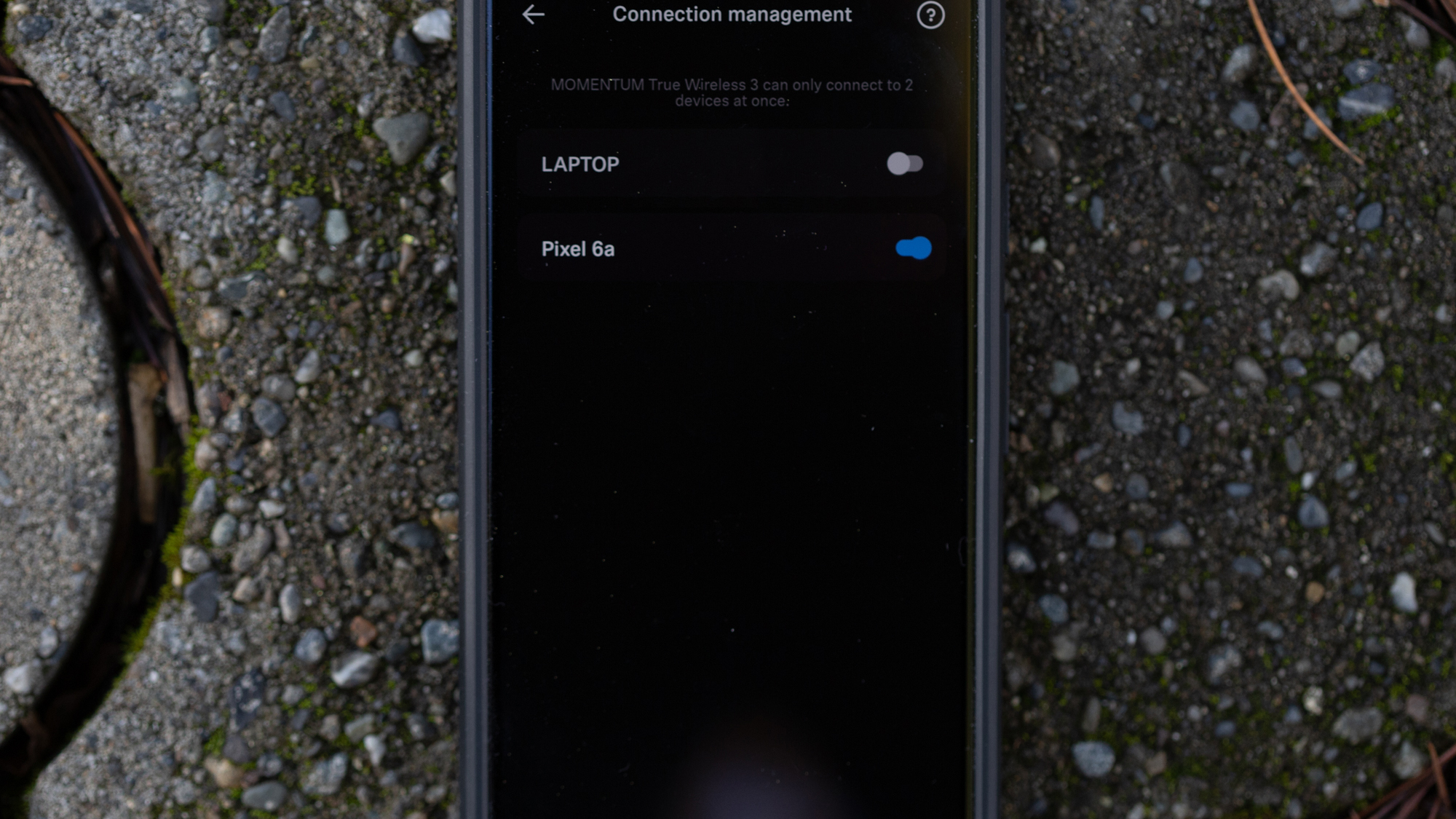
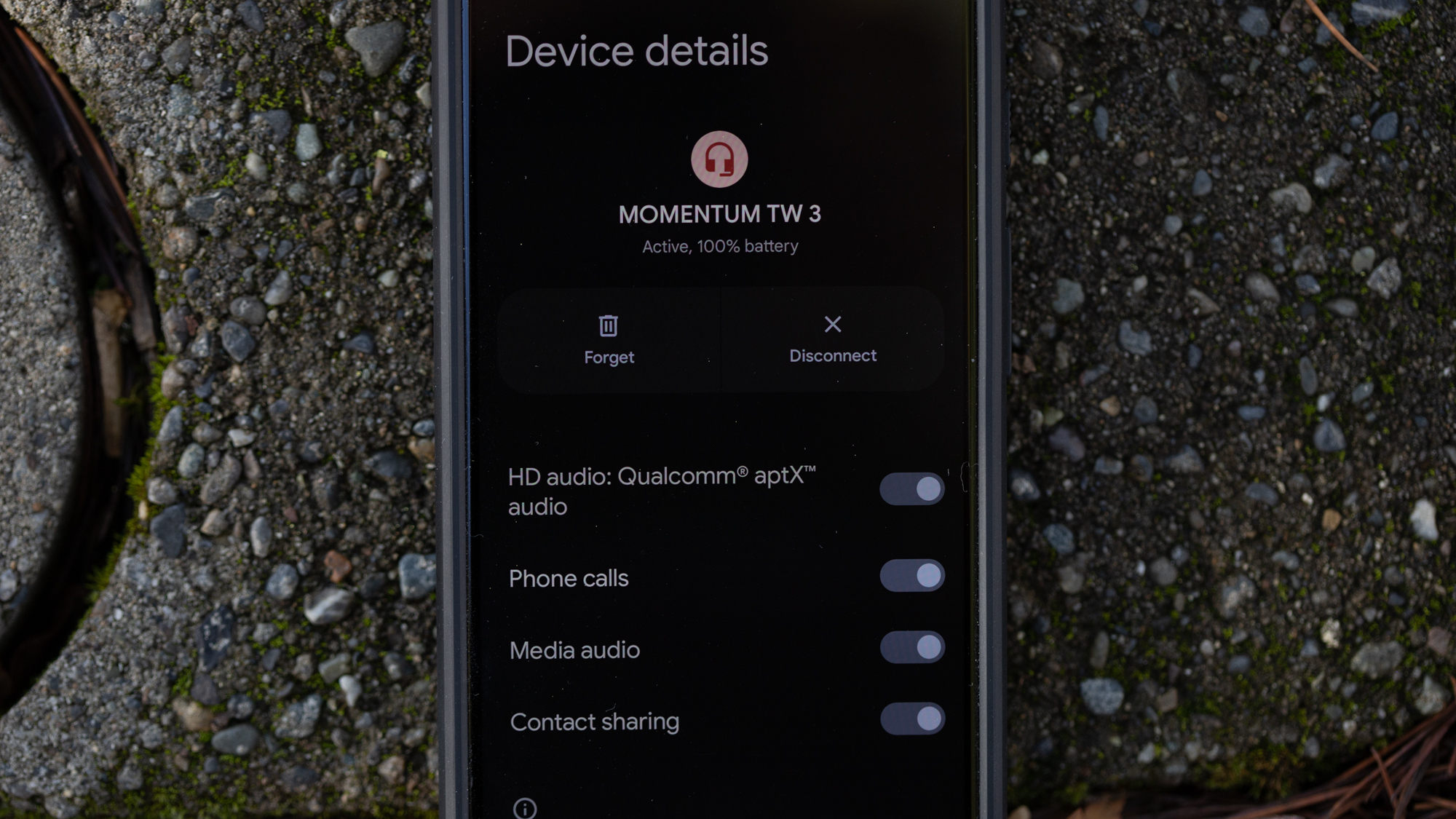
On paper, what sets the Sennheiser Momentum True Wireless 3 earbuds apart in the market is all about the technical details of how Bluetooth audio works. Your digital audio source file has the possibility of including more data than is possible to transmit wirelessly across the Bluetooth protocol. Solving this is the job of a set of Bluetooth Audio codecs which you can think of as a code book. Your phone has a copy of the code book and uses it to encode the audio it sends out. On the other side, the headphones have a copy of the code book that they use to decode the audio coming in and turn it into an analogue format for your ears.
If I've done a good job, that sounds simple. The reality is far from simple though. Different phones support different codecs and different headphones support different codecs. Different audio sources also have different quality and when you send data wirelessly out into the world there are all kinds of considerations that come with interference and distance. Power considerations and wireless frequency regulations play a part as well. It's a lot and it means that it's hard to put a point on exactly what is the best in every situation. Distilling it all down to extremely simplistic terms though, right now the Qualcomm aptX Adaptive codec is the most widely available format with the best possible sound quality. The Sennheiser Momentum True Wireless 3 headphones support aptX adaptive as well as the older aptX format. They also fall back on the universal SBC or AAC formats depending on your phone.
The latest race content, interviews, features, reviews and expert buying guides, direct to your inbox!
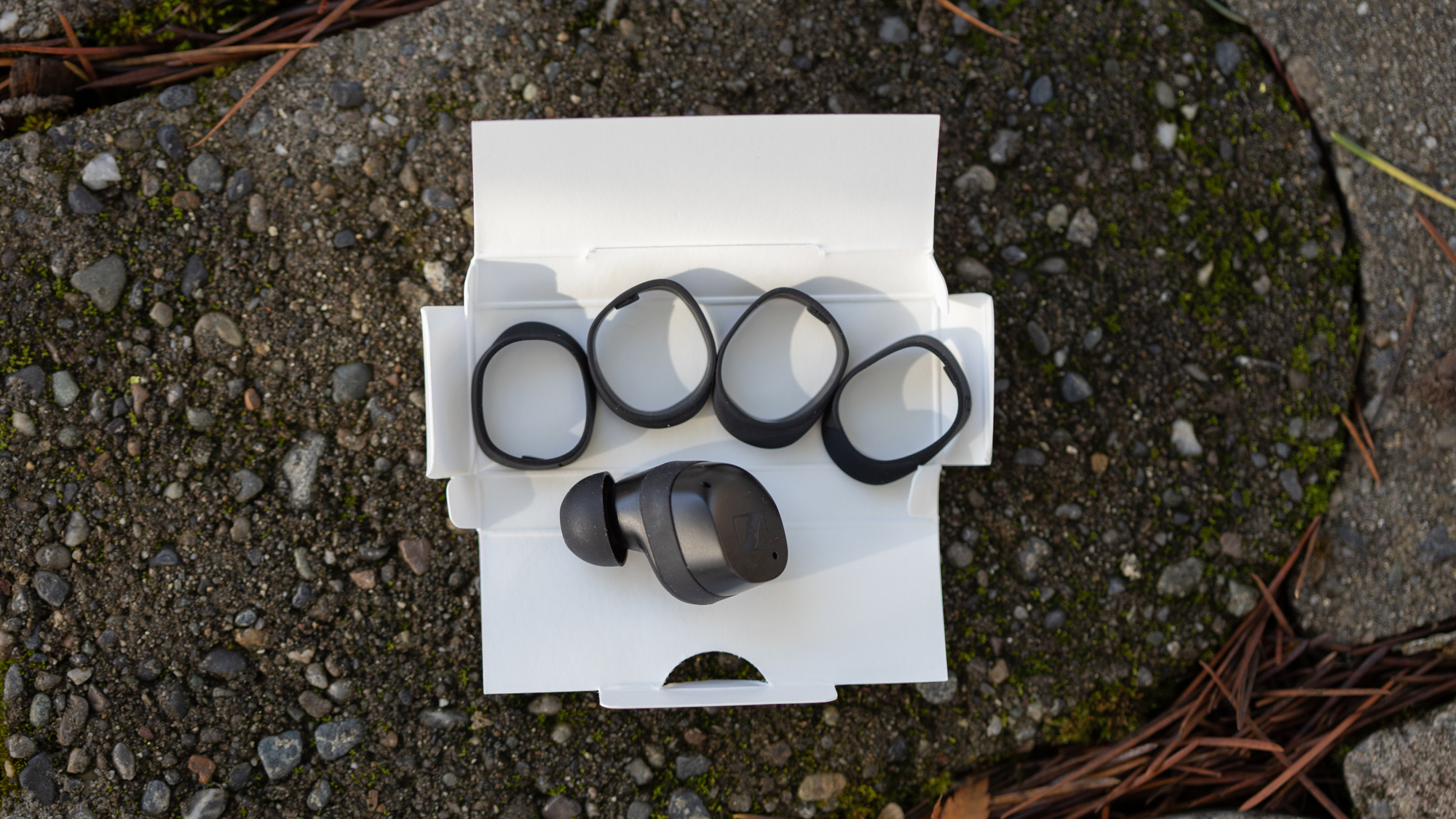
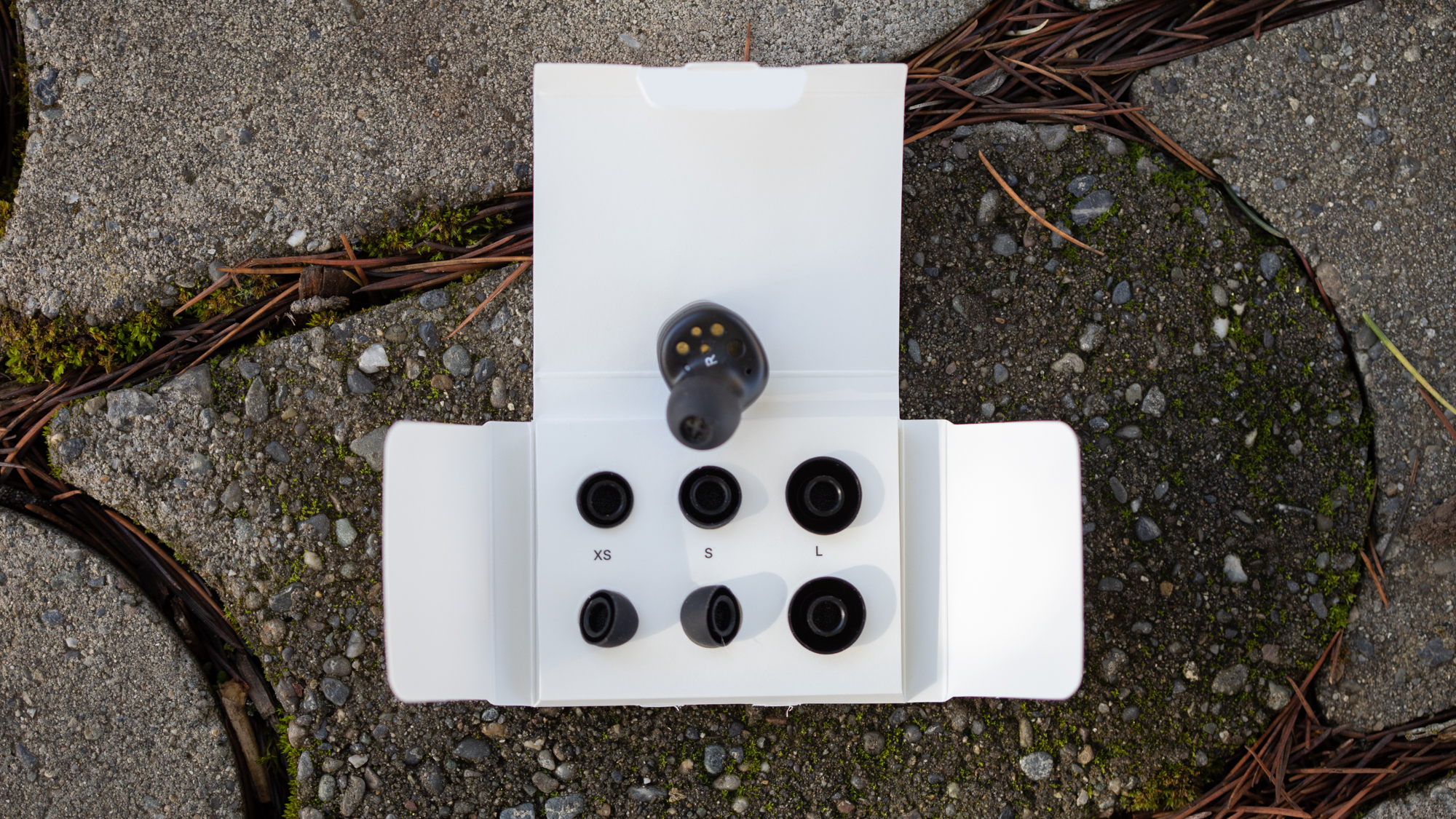
Performance
Okay, so the Sennheiser Momentum True Wireless 3 headphones offer support for the Qualcom aptX Adaptive Bluetooth codec and that's the best right? Well, maybe. There's also the Sony LDAC codec that can technically carry a higher bitrate. So, is it second? Well maybe. Qualcom might still be better because Qualcom says that their codec is more efficient and doesn't need to carry bitrates that high. Plus, both codecs change bitrates depending on connection quality and Sony does it in steps while Qualcom does it dynamically with no distinct steps. That means you are more likely to be at a higher bitrate at any particular point while listening.
Let’s drop that line of questioning for a second though. There's also the matter of where your music comes from. Spotify and Youtube Music are two of the biggest. Spotify will max out at 320kbps but only if you happen to change the setting from automatic to the best quality, and you are also paying for premium. Youtube music, which I use, meanwhile will max out at 256kbps but doesn't specify if that is at 16bit or 24bit so it's unclear if there's any advantage to aptX Adaptive over SBC. Seeing as that looks to be a dead end as well, let’s next look at the transmitting device.
I have a Google Pixel 6a and a Windows 11 computer. On the Windows side, it's up to the manufacturer of the Bluetooth module to decide what codec is available. There's also no simple way to see how a pair of headphones connects but with a bit of work I found my computer connects via MPEG-2 AAC. That should offer better quality but require more computing power compared to aptX. On the phone, it's only a little easier to see that the Pixel 6a supports aptx and aptx HD but not aptX adaptive.
Bottom line though, you might notice there's no aptX adaptive and that's not an isolated situation. I'm not exactly using obscure hardware and aptX isn't available to me. It also won't be available if you have an iPhone or a Samsung phone and that's a huge portion of all mobile phones sold. Given that the computer offers comparable if not better audio performance I was able to test the best of what the Sennheiser headphones can offer though and that points to the bigger picture. If you must have aptX adaptive then make sure your whole ecosystem supports it but, there are other reasons to look at the Sennheiser Momentum True Wireless 3 headphones.
A good place to start is the ease with which I was able to test the performance on my computer. Sennheiser just recently introduced multipoint audio to the headphones through a firmware update. That means I can connect to both my computer and my phone at the same time and the Sennheiser implementation is really good. If I'm listening to music on the computer and a phone call comes in then it switches and then goes back once I'm done. It's seamless and it works every time. It's also intelligent about which audio it picks up when trying to play music or video in multiple locations. For my use, I tended to just keep it connected to both and use whichever one I wanted to without needing to disconnect and reconnect anything.
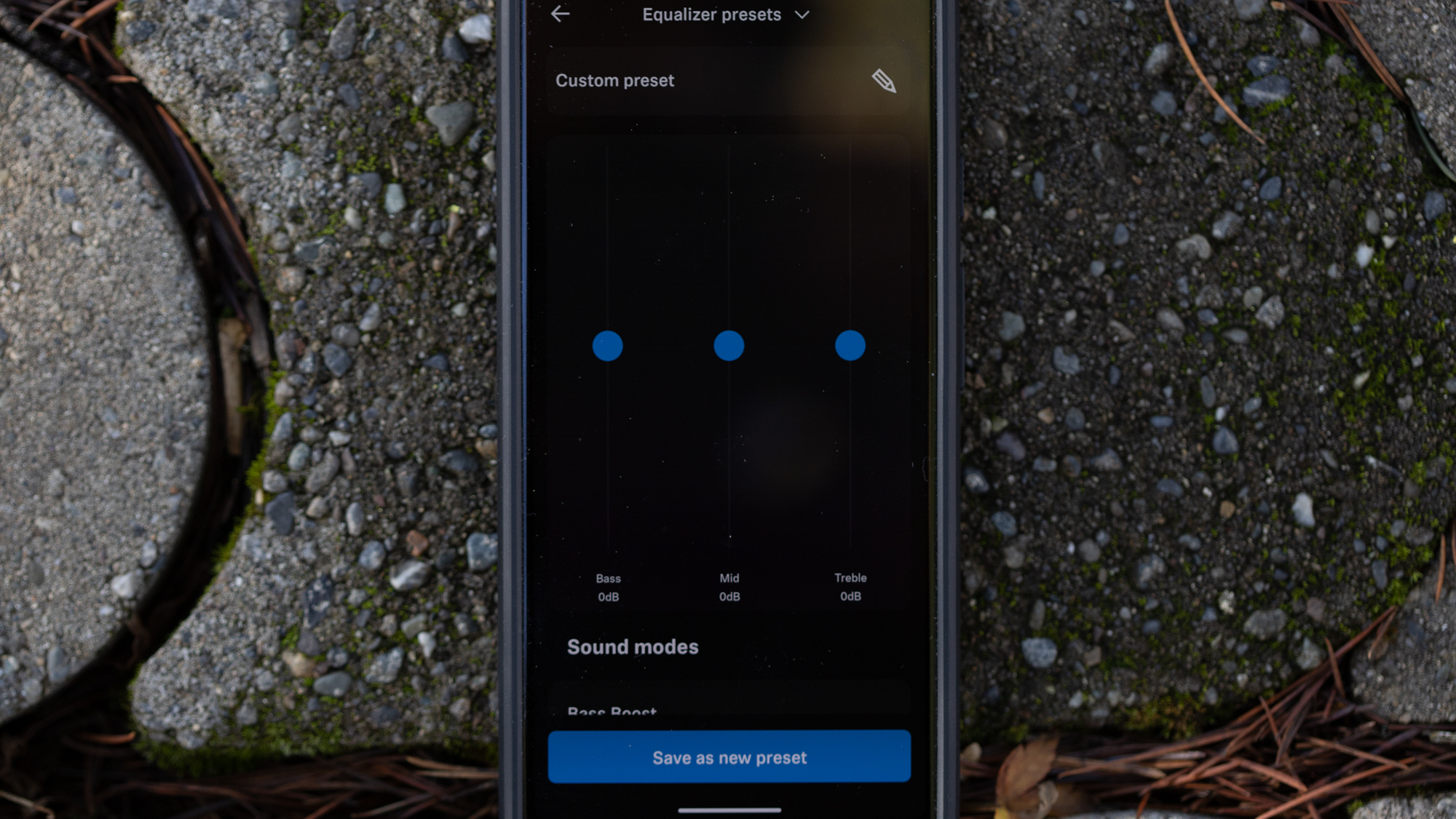
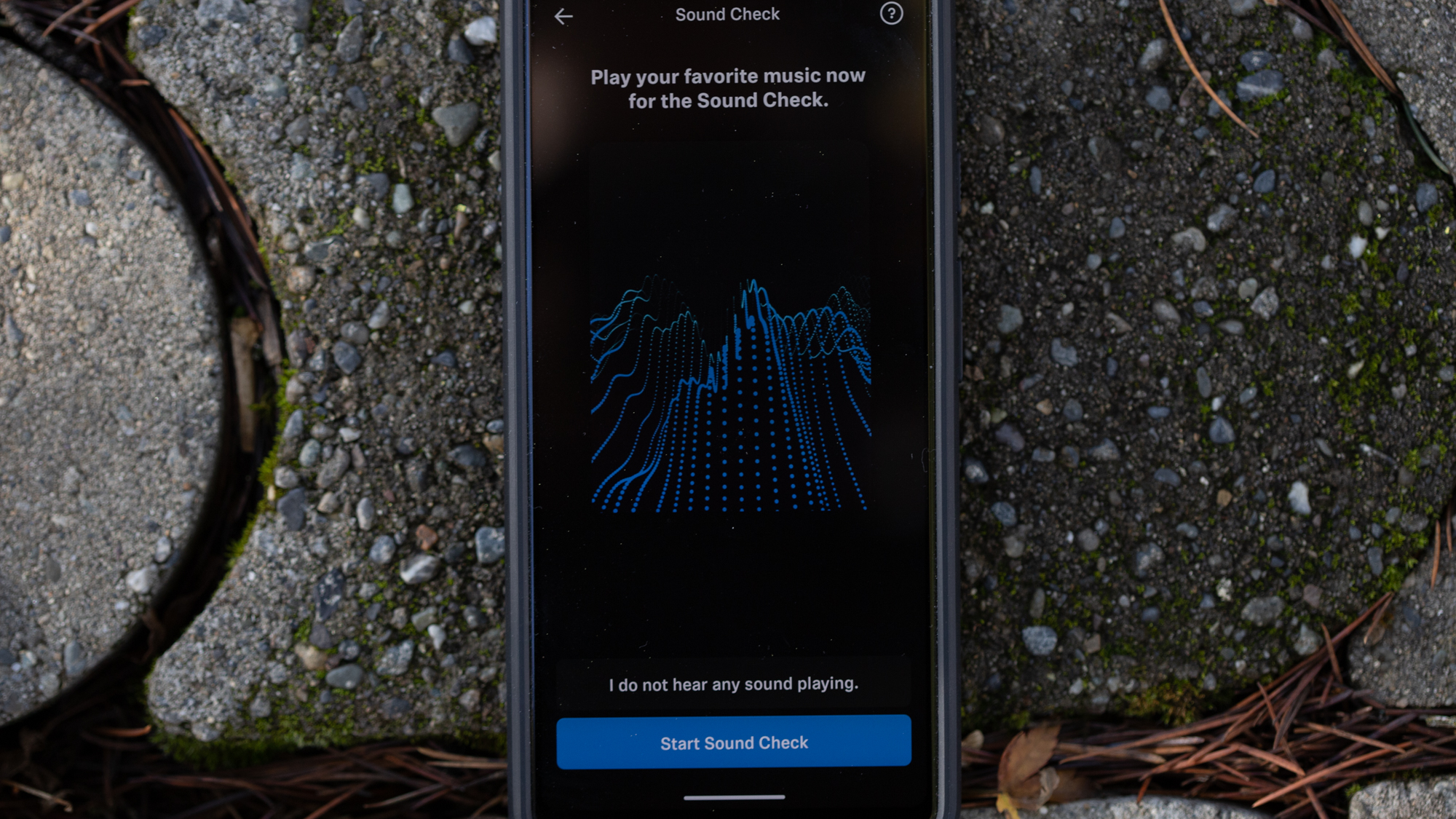
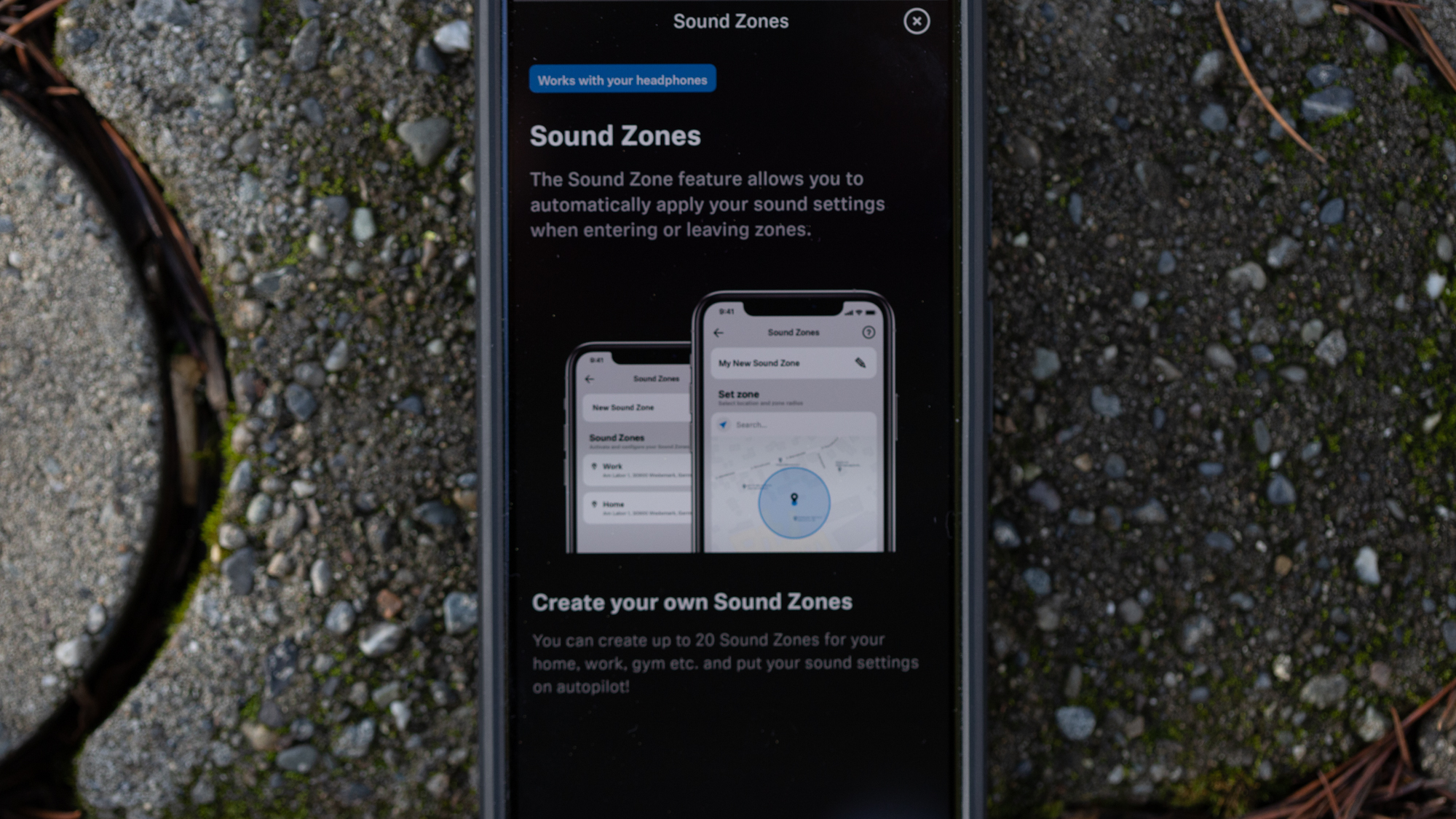
The audio performance is also subtly better than many of the other headphones I tried for that list. Not because there's a more advanced codec onboard but because the driver is 7mm vs the more common 6mm. There's just a bit more "roundness" to the sounds than you get with a smaller driver and you can hear it.
The same is true of the active noise cancelling. The Google Pixel Buds Pro have ANC that seems stronger but it's so strong it can feel a little disorienting. The Sennheiser implementation adapts more so that it's less noticeable but performance is similar when there's noise. In a quiet room, it is less pronounced but on an aeroplane, the end result is very close. I'd call it more polished.
More than anything, what I liked though was the fit. Headphones are more secure when you sweat if they use a wing in the outer ear but they are less comfortable. Sennheiser has three wing sizes as well as three sizes for the tip that sits in the ear canal. I was able to mix and match until I found a comfortable combination that didn't get loose when sweaty. It's the best of both worlds.
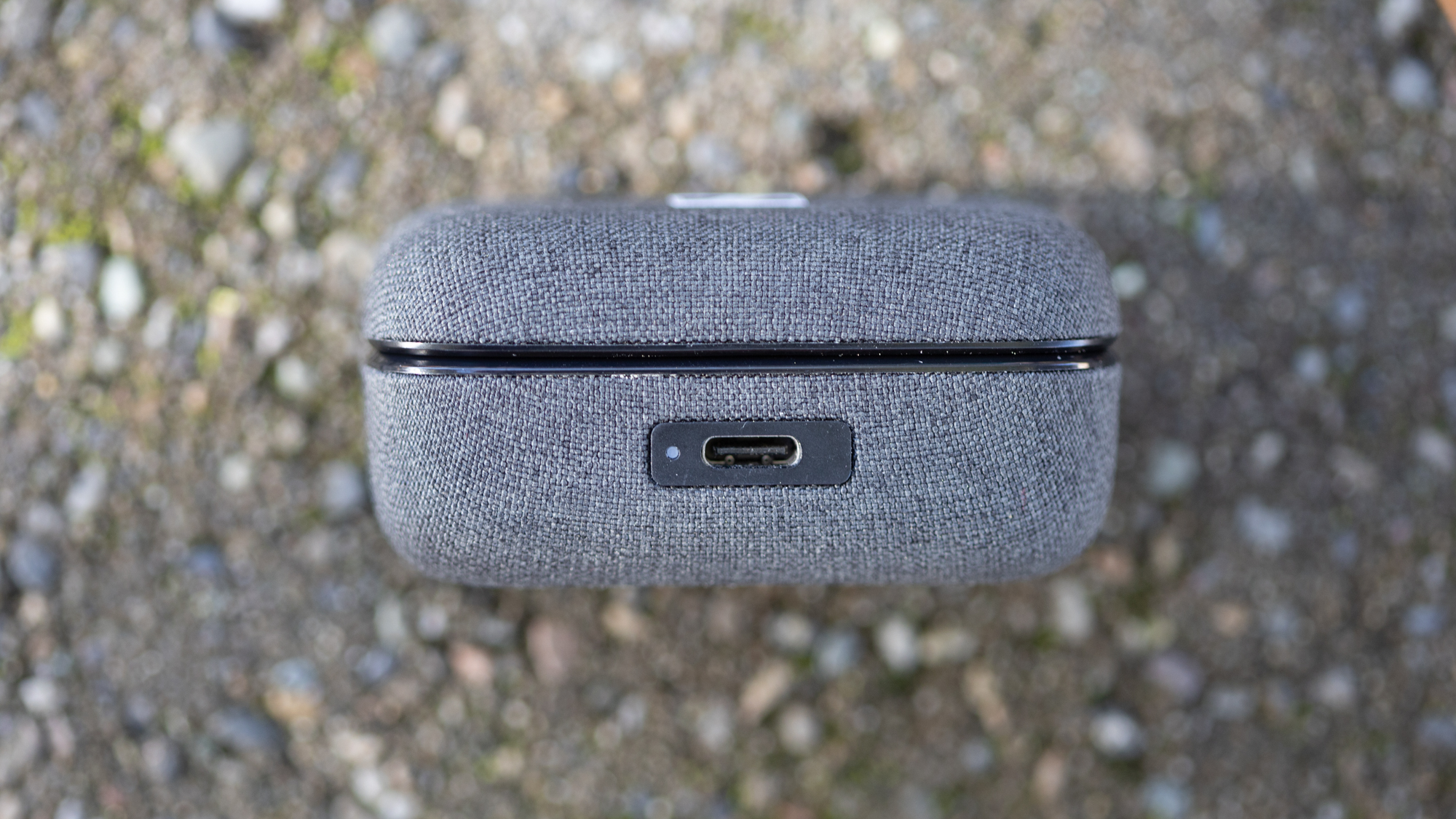
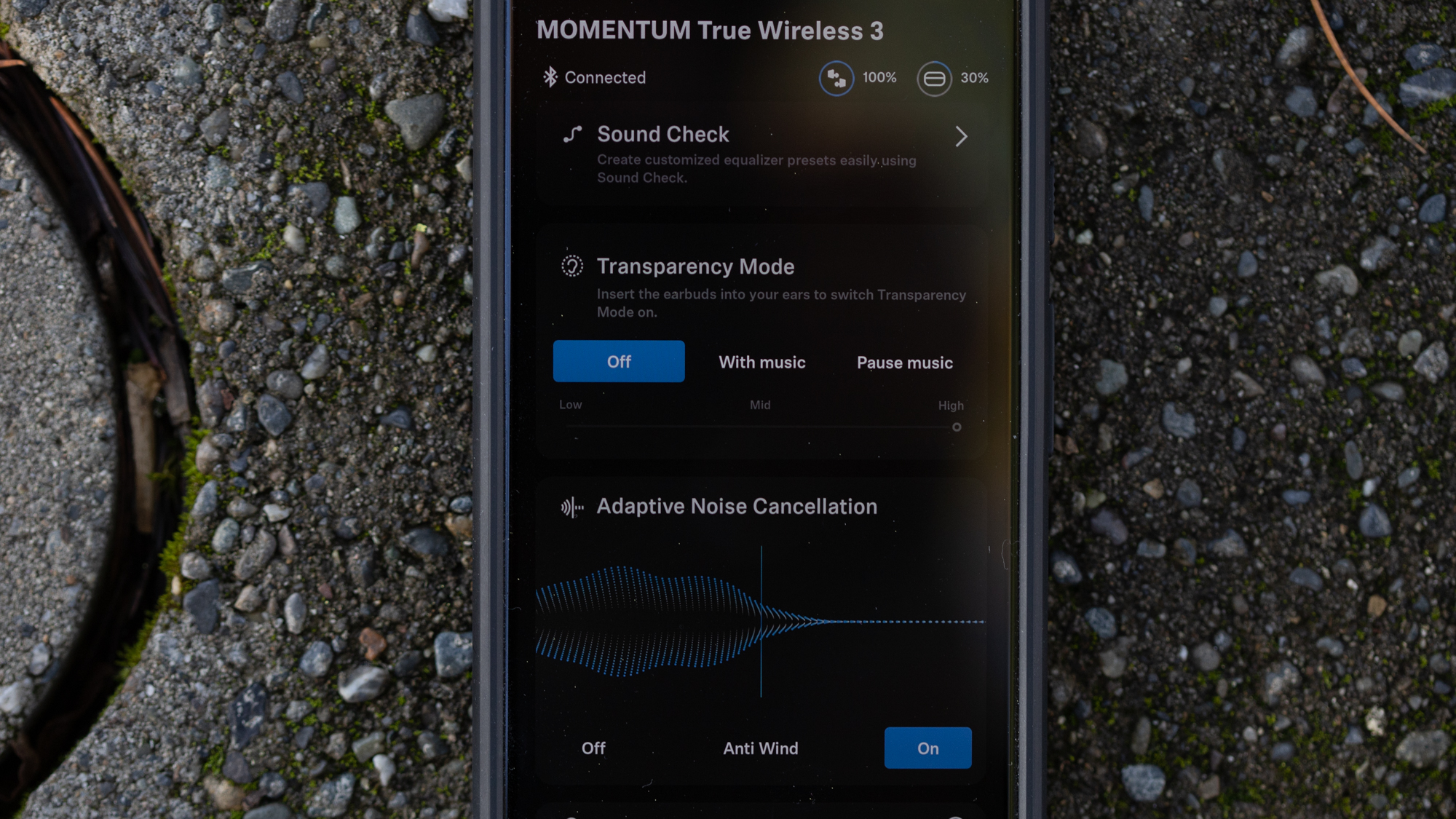
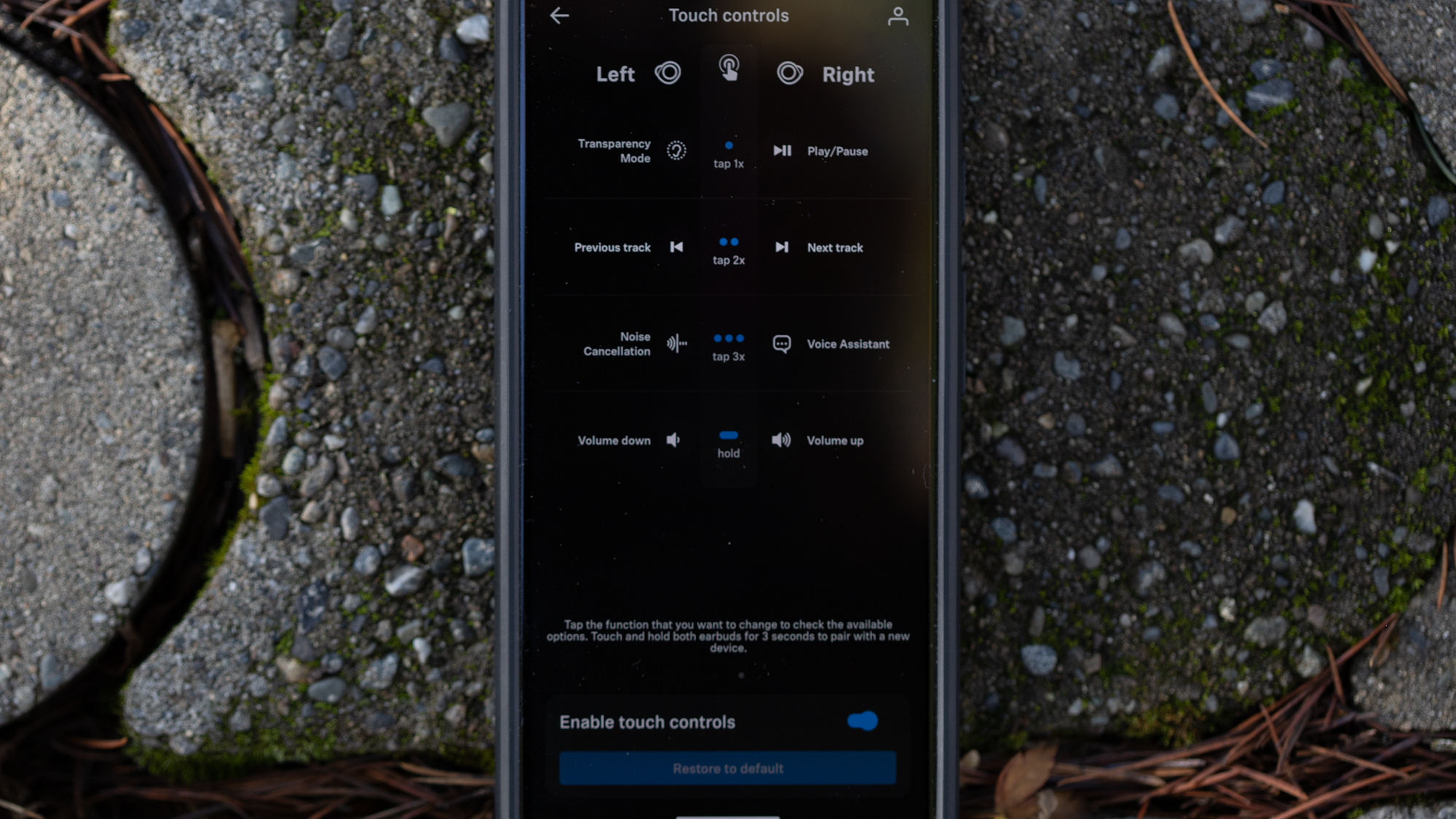
Verdict
When I look at users discussing Bluetooth headphones and sound quality, Bluetooth codecs come up a lot. It becomes a defining characteristic that will influence buying decisions. If that's you then the Sennheiser Momentum 3 Wireless has the best version of what is, arguably, the best codec. For everyone else, there are a lot of reasons why you also might want these headphones.
If sound quality is important to you then the larger drivers do help sound quality. That helps make them a more well-rounded pair of headphones even if on a bike you end up using only one headphone in a noisy environment. There are other great features too and things like multipoint audio, an excellent app experience, wireless charging, and long battery life are what I feel are far more important to the experience. It's actually the fit that leads to me using these so much of the time.
As with most top-shelf products, the biggest issue ends up being price. Sennheiser charges a premium for these and it's unclear if it's worth it. They are better in a few key places but what's your price threshold for getting the best? Step down to the £150/$150 price point and you find yourself in the heart of the true wireless ecosystem where almost every major company has an option. You might also decide that it's worth paying even more money and getting one pair of headphones for on the bike and one for off. The Sennheiser Momentum True Wireless 3 offer one of the best all-around experiences. The trick will be deciding what solution you think is going to work best for you.
| Sound quality | It’s a bit bass heavy but there’s an easy-to-use equaliser or you can have the app walk you through personalising the sound with a series of choices | 10/10 |
| Comfort | Right up there with the best of the best for true wireless earbuds. | 10/10 |
| Companion App | You do have to force close it a lot of the time to get it to refresh when reconnecting but it’s overall a very good experience. | 9/10 |
| Features | Almost every feature available on any pair of headphones is here. There are better ANC systems but not many. The mic could be a bit better as well but also, very good. | 8/10 |
| Value | All the features are included but you do pay for it. You can get very close for a substantially lower price. | 6/10 |
| Overall | Row 5 - Cell 1 | 86% |
Tech Specs: Sennheiser Momentum True Wireless 3
- Price: £219.99 / $249.95 / €249.90 / AU$399.95
- Colour options: Black, White, Graphite
- Play Time: 7 hours in buds without ANC with three additional full charges in case
- Charge Time: Quick charge: 10 min gives you 1 hour of playtime. Time to full charge: 1.5 hours
- Touch Response Functions: Control music, ANC control (on, off, Awareness mode), Receive / end calls, summon the voice assistant
- Wireless Connectivity: Bluetooth 5.2
- Water Resistance: Earbuds - IPX4 earbuds only
- Bluetooth Audio Codec support: SBC, AAC, aptX, aptX adaptive
Josh hails from the Pacific Northwest of the United States but would prefer riding through the desert than the rain. He will happily talk for hours about the minutiae of cycling tech but also has an understanding that most people just want things to work. He is a road cyclist at heart and doesn't care much if those roads are paved, dirt, or digital. Although he rarely races, if you ask him to ride from sunrise to sunset the answer will be yes.
Height: 5'9"
Weight: 140 lb.
Rides: Salsa Warbird, Cannondale CAAD9, Enve Melee, Look 795 Blade RS, Priority Continuum Onyx
